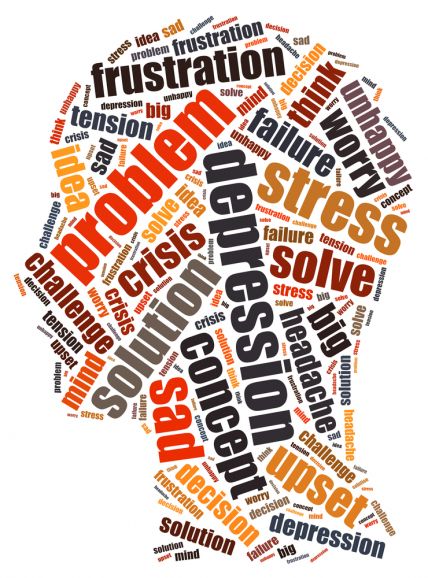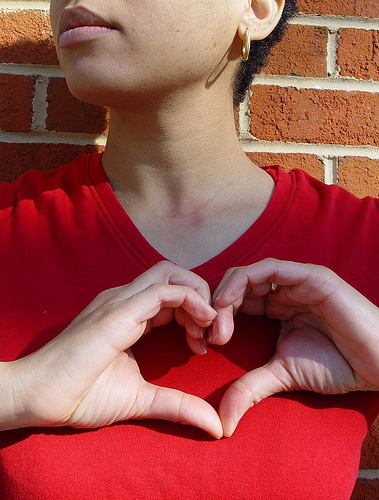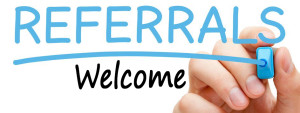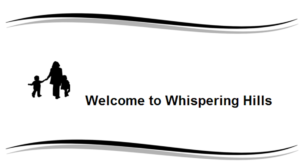
HIV and Mental Health
Receiving a diagnosis of HIV comes with an array of emotions. Initial feelings of shock and denial can turn to fear, guilt, anger, sadness, and a sense of hopelessness, some people even have suicidal thoughts. It is understandable that one might feel helpless and fear illness, disability, and even death. In fact, according to aids.gov, research proves that people who are living with HIV/AIDS often have mental health disorders like anxiety, depression, or mania.
The virus itself can affect your mental health. Some opportunistic infections (which occur when your immune system is damaged by HIV) can affect your nervous system and can lead to changes in behavior and functioning. Some illnesses, like dementia, can be associated with advanced cases of HIV disease. For these reasons, it is important to do a comprehensive evaluation of your mental health and well-being at the beginning of your treatment. It is also important to be open and honest with your healthcare provider about changes in the way you are thinking, or how you are feeling about yourself and life in general.
One thing that is certain, when living with HIV/AIDS, good mental health is essential for a successful treatment and for living a happy and healthy life. The first step of doing so is knowing that HIV can affect your mental health – and that there are resources available to help if you need it. So how do you know that it’s time to get help? Sometimes, you can notice a change in yourself—and, sometimes, the people around you are the ones who notice. Some changes that might be significant include:
- Experiencing “panic attacks”
- No longer finding enjoyment in activities which usually make you happy
- Withdrawing from social interaction
- Change in memory functioning
- Sleeping too much—or being unable to sleep
- Feeling “sad” or “empty” much of the time
- Feeling guilty
- Feeling tired all the time
Below are mental health diseases commonly associated with a diagnosis of HIV according to the American Psychiatric Association:
Depression
Depression is a serious medical condition that can be paralyzing to sufferers. It is twice as common in people with HIV as in the general population. Depression is characterized by the presence of most or all of the following symptoms: low mood, apathy, fatigue, inability to concentrate, loss of pleasure in activities, changes in appetite and weight, trouble sleeping, low self-worth, and, possibly, thoughts of suicide. There are many different types of treatments for depression, including antidepressants and specific types of psychotherapy, or “talk” therapy. Treatment, however, must be carefully chosen by a physician or a mental health professional based on the patient’s physical and mental condition.
Anxiety
Anxiety is a feeling of panic or apprehension, which is often accompanied by the physical symptoms of sweating, shortness of breath, rapid heart beat, agitation, nervousness, headaches, and panic. Anxiety can accompany depression or be seen as a disorder by itself, often caused by circumstances that result in fear, uncertainty, or insecurity. Each HIV patient and each experience of anxiety is unique and must be treated as such. Many drugs offer effective treatment, and many alternative remedies have proven useful, either alone or in combination with medication. Among them: muscle relaxation, acupuncture, meditation, cognitive behavioral therapy, aerobic exercise, and supportive group therapy.
Substance Use
Substance use is very common among those with HIV infection. Unfortunately, substance use can trigger and often complicate mental health problems. For many, mental health problems predate substance use activity. Substance use can increase levels of distress, interfere with treatment adherence, and lead to impairment in thinking and memory. Diagnosis and treatment by a psychiatrist or other qualified physician is critical because symptoms can mimic psychiatric disorders and other mental health problems. The idea that HIV is closely connected to substance abuse is not surprising to healthcare providers who have been working to care for people living with HIV for any length of time. But what many people don’t know is that substance abuse is significantly tied to both prevention AND treatment of HIV.
Cognitive Disorders
Direct or indirect effects of the HIV virus can affect brain functioning. Some medications used to treat HIV infection also can cause similar complications. In people with HIV infection or AIDS, these complications can have a significant impact on daily functioning and greatly diminish quality of life. Among the most common disorders are HIV-associated minor cognitive motor disorder, HIV-1-associated dementia complex, delirium, and psychosis. Signs of trouble may include forgetfulness, confusion, attention deficits, slurred or changed speech, sudden changes in mood or behavior, difficulty walking, muscle weakness, slowed thinking, and difficulty finding words.
Signs of any of these problems should be discussed with a physician immediately. New anti-HIV therapies in combination with psychiatric medication can reverse delirium and dementia and markedly improve cognition; however, special care must be taken to ensure that the drugs do not interact with HIV medications. Psychotherapy also can help patients understand their condition and adapt to their diminished level of functioning.
One of the hardest parts of having mental health issues is that you may not feel like seeking treatment or going to your appointments once you schedule them. If you are feeling this way, ask a friend or family member to help you make and keep your appointments. When you follow through, your mental health provider can help you feel better, and that can improve your chances of successful HIV treatment.

Heart Disease in Women
All women face the threat of heart disease. But becoming aware of symptoms and risks unique to women, as well as eating a heart-healthy diet and exercising, can help protect you.
Although heart disease is often thought of as a problem for men, more women than men die of heart disease each year. One challenge is that the heart disease symptoms in women can be different from symptoms in men. Fortunately, women can take steps to understand their unique symptoms of heart disease and to begin to reduce their risk of heart disease.
According to the Center for Disease Control, the term “heart disease” refers to several types of heart conditions. The most common type in the United States is coronary artery disease, which can cause heart attack, angina, heart failure, and arrhythmias.
Heart Attach Symptoms In Women: The most common heart attack symptom in women is some type of pain, pressure or discomfort in the chest. But it’s not always severe or even the most prominent symptom, particularly in women. Women are more likely than men to have heart attack symptoms unrelated to chest pain, such as:
- Neck, shoulder, upper back or abdominal discomfort
- Shortness of breath
- Nausea or vomiting
- Sweating
- Lightheadedness or dizziness
- Unusual fatigue
These symptoms are more subtle than the obvious crushing chest pain often associated with heart attacks. This may be because women tend to have blockages not only in their main arteries, but also in the smaller arteries that supply blood to the heart — a condition called small vessel heart disease or microvascular disease.
Heart Disease Risk Factors for Women: Although the traditional risk factors for coronary artery disease — such as high cholesterol, high blood pressure and obesity — affect women and men, other factors may play a bigger role in the development of heart disease in women. For example:
- Metabolic syndrome — a combination of fat around your abdomen, high blood pressure, high blood sugar and high triglycerides — has a greater impact on women than on men.
- Mental stress and depression affect women’s hearts more than men’s. Depression makes it difficult to maintain a healthy lifestyle and follow recommended treatment, so talk to your doctor if you’re having symptoms of depression.
- Smoking is a greater risk factor for heart disease in women than in men.
- Low levels of estrogen after menopause pose a significant risk factor for developing cardiovascular disease in the smaller blood vessels (small vessel heart disease).
What Can Women Do to Reduce the Risk of Heart Disease:
Luckily, there are several lifestyle changes you can make to reduce your risk of heart disease. Just incorporating these simple daily activities could be a matter of life and death.
- Exercise 30 to 60 minutes a day on most days of the week.
- Maintain a healthy weight.
- Quit or don’t start smoking.
- Eat a diet that’s low in saturated fat, cholesterol and salt.
You’ll also need to take prescribed medications appropriately, such as blood pressure medications, blood thinners and aspirin. And you’ll need to better manage other conditions that are risk factors for heart disease, such as high blood pressure, high cholesterol and diabetes. Some women at high risk of heart disease may also benefit from the use of supplements, such as omega-3 fatty acids. (Mayo Clinic)

Think Healthy, Swim Healthy, BE HEALTHY!
With the cold weather behind us and summer quickly approaching, everyone is ready to pack up that beach bag, lather on the sunscreen, and head to their favorite spot to relax – the water! Swimming is one of the most popular sport activities in the United States, not only offering refreshing fun but a variety of healthy benefits. From physical to mental benefits, swimming is a good choice all around. Though, in between the games of Marco-Polo and lounging the day away on your favorite raft, few people recognize that pools and other recreational water venues are also places where germs can spread and injuries can happen. Having fun while you swim means knowing how to prevent recreational water illnesses, and we have the perfect tips for you to stay healthy, safe, and happy in the water!
According to the Center for Disease Control, Recreational water illnesses (RWIs) are caused by germs spread by swallowing, breathing in mists or aerosols of, or having contact with contaminated water in swimming pools, hot tubs/spas, interactive fountains, lakes, rivers, or oceans. RWIs can also be caused by chemicals in the water or chemicals that evaporate from the water and trigger indoor air quality problems. In addition to illnesses, injuries — such as drowning and slips, trips, and falls — can occur in or around the water. It is important to remember that contrary to popular belief, chlorine and other disinfectants do NOT kill germs instantly. In fact, once germs enter the pool, it can take anywhere from minutes to days for chlorine to kill them.
With the number of recreational water injuries on the rise, swimmers need to take an active role in protecting themselves and their fellow swimmers and prevent the spread of germs. Below are simple tips to help protect yourself and those around you.
- Shower with soap before swimming
- Take a bathroom break every 60 minutes
- Wash your hands after using the toilet and/or changing diapers
- Don’t swallow the water you swim in
Parents of young children should take a few extra steps..
- Take children on bathroom breaks every 60 minutes
- Check diapers every 30 minutes
- Change diapers in the bathroom or diaper changing area and NOT poolside where germs can travel into the water
Equally dangerous to germs, drowning is the leading cause of injury death for children ages 1-4. Every day, 10 people die from drowning; 2 of those 10 are children under the age of 15 years. Of drowning victims who survive and are treated in emergency departments, more than half are hospitalized or transferred for further care. These individuals often experience brain damage, which can cause memory problems, learning disabilities, or permanent loss of basic functioning (or permanent vegetative state). To prevent drowning:
- Everyone (adults and children) should know how to swim
- Caregivers should know CPR
- All boaters and weaker swimmers should wear life jackets
- Backyard swimming pools should be separated from the house and yard by a fence with a self-closing and self-latching gate.






